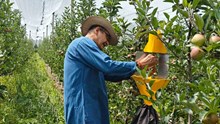
Food and Agriculture Organization of the United Nations (FAO) has reported a slight decline in global food commodity prices in September, mainly driven by drops in sugar and dairy prices. According to the FAO Food Price Index, which tracks monthly changes in the prices of globally traded food commodities, the average index stood at 128.8 points in September compared to a revised figure of 129.7 points in August. Despite this month-on-month dip, the index was still 3.4 percent higher than the same time last year, indicating continued volatility in the global food market.
Among the individual categories, the FAO Cereal Price Index fell by 0.6 percent from August. International wheat prices declined for the third month in a row due to weak demand and larger harvests in major producing nations. Maize prices also eased, supported by forecasts of abundant global supplies and the temporary suspension of export taxes in Argentina.
Meanwhile, rice prices dropped slightly as reduced orders from the Philippines and African nations softened the market. Vegetable oil prices registered a 0.7 percent dip, with lower palm oil and soybean oil quotations offsetting gains in sunflower and rapeseed oil.
FAO Meat Price Index stood out by rising 0.7 percent from August, hitting a record high, and marking a 6.6 percent increase compared to last year. Strong demand for bovine and ovine meat, particularly in the United States where limited domestic supplies encouraged imports, pushed bovine meat prices to all-time highs. On the other hand, poultry and pig meat prices remained stable.
Dairy and sugar indices showed more pronounced declines. The Dairy Price Index fell 2.6 percent in September, led by a sharp 7 percent fall in global butter prices, attributed to waning demand for ice cream in the Northern Hemisphere and improved production prospects in Oceania. Milk powder prices also dropped due to weaker demand from key importers. The Sugar Price Index recorded the steepest decline of 4.1 percent, hitting its lowest level since March 2021. The fall was largely due to better-than-expected sugar production in Brazil and favourable crop conditions in India and Thailand.
Alongside the price data, FAO released updated forecasts for global cereal production, pegging 2025 output at 2,971 million tonnes, a 3.8 percent increase from last year and the largest annual growth since 2013. Wheat, maize, and rice production are all expected to see significant increases, especially in Australia, the U.S., and India. Utilization is projected to rise to 2,930 million tonnes, while cereal stocks are expected to reach 900.2 million tonnes by the end of the 2026 season.
FAO also forecast international cereal trade to grow by 2.5 percent to 497.1 million tonnes, mainly due to higher wheat trade, though rice trade is likely to decline as Asian and African countries rely more on local harvests.
















